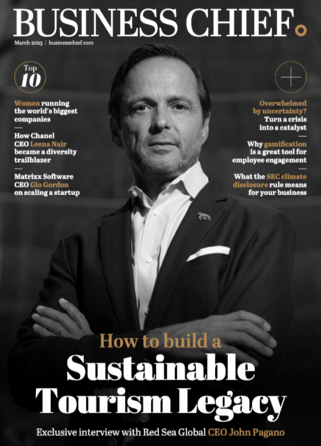Five Important Rules for Successful Business Blogging

Written by Binh An Nguyen
Read this article in the July Edition of Business Review Australia magazine
Savvy business owners in Australia are starting to realise the importance of business blogging for the growth of their organisations in the 21st century. But how does one leverage this online medium effectively to attract potential clients, staff, investors, joint venture partnerships, and capture media attention to their business? In this article, I will attempt to explain the main things you need to look out for when putting together a blog for your business to maximise your chances for success.
But first, for the skeptics out there, a survey was done by Hubspot on 7,000 different B2C and B2B companies, which revealed the following mind-blowing results about the effects of blogging for your company >>>
- Companies that blog 15 or more times per month get 5 times more traffic than companies that don’t blog.
- An average company will see a 45 percent growth in traffic when increasing their total blog articles from 11-20 to 21-50 articles.
- Companies that increase blogging from 3-5 times per month to 6-8 times per month almost double their leads.
- Companies with over 200 blog articles have more than 5x the leads than those with 10 or fewer blog articles.
- The complete report can be viewed online here [http://goo.gl/c1pHg].
Faced with these fabulous figures, why wouldn't a company want to allocate a portion of their marketing budget to blogging?
But it has to be done in the right way to maximise your chances for success. Here are five sure-fire routes for business blogging success.
Engagement
A person will be much more likely to buy into you if he or she is engaged in your content and your company. However, building engagement online is easier said than done. Yet, businesses need to think about engaging their visitors if those visitors are to return and become loyal clients. Here are a few things you need to keep in mind when blogging for your business to increase your reader engagement >>>
- Post unique content that will grab your visitors' interest.
- Make your posts are easily shareable – have buttons on each blog posts for sharing your content on different social media sites such as LinkedIn, Facebook, Twitter and Google+ etc.
- Encourage comments– but moderate them before they arrive on the page (this does not mean deleting all the negative comments; just moderate it from spam).
- End the post with a call to action – whether that's signing up for your newsletter or directing your visitor to a different part of your site.
The key thing to remember is that the blog should not be exclusively about you and your products or services; it's also about your company's relationship with your customers, and education for your market on your industry. Where possible, try to include a glimpse of your values, culture and beliefs as well, as people buy into your values not just your products and or services.
Consistency
You may have come across great looking blogs that promise entertainment, education, inspiration, and more, but have not been updated in months. Chances are, you left the blog and never came back. Don't begin a blog only to abandon it. A blog is leveraged when you post regularly and consistently.
So how often should your business post?
This is a bit of a “how long is a piece of string?” type question, and varies greatly depending on your business and your industry. If your blog concentrates on timely content on the latest news, you might want to blog daily. If your business blog is about a tighter niche, where information is limited, you can blog less regularly. For the average business, I recommend blogging 2-3 times per week for optimal performance. Try to schedule once or twice a week for the longer, quality posts, or even once a month if you're producing really excellent, big, brilliantly researched content.
Whatever you do, the key to blogging is consistency. Don’t just write 1,000 posts one month and none the next. Also focus on the quality of your content and vary the type of content you produce where possible (more on that later).
Add Value
“Give to someone with no expectation of getting something in return” is a great quote from CEO of Procter and Gamble, Steve Knox. By building a relationship with your audience, you will encourage brand preference, and ultimately, brand loyalty. A by-product of this is also the creation of an army of brand advocates.
Communicate with your customers regularly. Your blog will be an invaluable tool for getting feedback, apologising for mistakes, telling people about your new products, telling your brand's story, and letting them know that there's a human side to your company. And it will also be a way for you to provide great information and build trust and credibility with your audience.
A prime example of a blog that adds value to its readers is Deloitte Digital's blog, which has transformed itself into a resource for all things digital. The article “The Peak of the Retail Big Bang”, for instance, presents an analysis from their own retail survey. By presenting useful real-life survey results for their readers to take away and digest, they are adding lots of value to their audience, and helping to convince them of the need for a digital presence in the process
Education
Transform yourself into an authority in your industry, and focus on solving the problems of your audience by providing them with great advice and useful information. Your visitors may not be ready to buy from you immediately, but when you position yourself as the go-to expert in your industry, and are always in front of them, providing valuable advice to them, when they are ready for your products and services, you will be the first company in their minds.
A great example of a blog that educates is the Google Webmaster Central Blog. It is full of useful and informational content, created to educate their users. As soon as a new post gets published, many webmasters around the world link to it on their own websites, which helps with search engine optimisation (SEO), and it attracts lots of social shares. Google is of course a behemoth, but the principle is the same for small online companies, as well as offline bricks and mortar businesses.
Mixing up the Content
Varying the kind of blog posts you publish will help avoid monotony, and diversifying your content will give a better chance of being shared and linked to. It will also help you to attract more visitors through SEO, as Google loves multimedia. Beautiful interactive graphics, photographs, audios, videos, and presentations will help keep both your readers and the search engines riveted and coming back for more.
An example of this is Blendtec’s “Will it Blend?” video series. They feature videos of Blendtec's recently ex-CEO, Tom Dickson, blending items like the iPhone and marbles in one of their basic blenders. They make for fascinating viewing.
Is there anything interesting you can do with your own business that you could film, record, or present in an interesting way, such as through an infographic or a powerpoint presentation, that you can share on a blog post?
Summary
There are very few better ways of attracting lots of traffic and leads, and inspiring customer loyalty than via a business blog. Although it is time consuming and takes a lot of your resources, the returns that it produces for your businesses is exponential and far outweighs the resources you need to invest to make it work. The good news is that you, as the business owner, do not need to do it all yourself. Business blogging can be leveraged through your team of internal staff, or through an external contractor, and can yield a return on investment that is exponential.
I hope this article inspires you to start a blog for your own business if you haven’t already done so. And if you’re one of those savvy business owners who have already started a one, I hope this article gives you more direction and clarity for your business blog, and inspires you to plan and take your online content strategy more seriously for maximum growth.
About the Author
Binh An Nguyen is the CEO of Market Ease Business Promotions, a digital marketing agency dedicated to helping companies in Australia grow by leveraging the power of the internet. In the past 6+ years, Binh has helped several multi-million dollar companies in Australia establish themselves as the market leaders in their fields, and sell hundreds of millions of dollars worth of products and services online. You can find out more about Binh and his company at http://www.marketease.com.au



